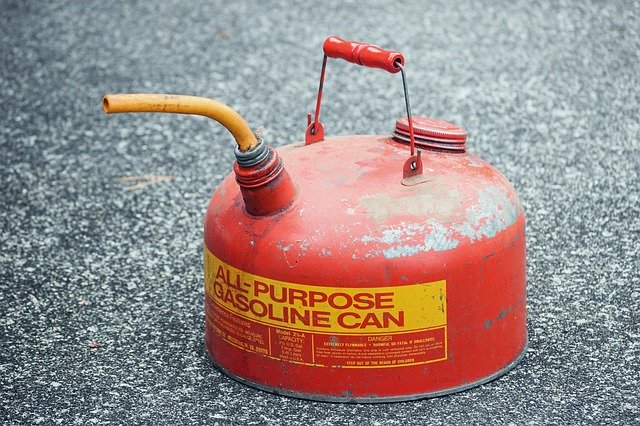It doesn’t matter if it’s a push mower or rider, most lawn mowers are carbureted, and carburetors flood. If your lawnmower is flooded there are some practical steps to get it started right now. Let’s get straight to it.
Here are the Best Ways to Un-Flood a Lawn Mower
Push mowers and riding lawn mowers have engines that function the same way. They are simple carbureted engines. The procedure for un flooding them is the same.
Give it Some Time
The old saying is that time heals all wounds. And with the case of a flooded lawn mower it’s totally true. If you aren’t in any hurry, just head inside, pour a Pepsi and wait about 20 minutes and the gas will evaporate.
Waiting it out is definitely a good idea if you have a pull start mower. It can save you many unnecessary pulls of the string. If you have a motor with an electric start, you can set the throttle to wide open and see if you can crank through it.
Wide Open Throttle
If your mower has an adjustable throttle, set it to wide open. This is the best way to get excess fuel out of the carburetors bowls. Keep cranking the engine and it’ll most likely fire. This is how people started flooded vehicles back when everything was carbureted.
If this doesn’t work, you may have to go with the active approach directly below.
The Active Approach to De-Flooding a Mower
The main reason that a lawnmower won’t start when its flooded is that the spark plug’s electrode is covered in fuel. Lawnmowers don’t have the strongest spark to begin with, so when this happens the fuel on the plug keeps the spark from forming.
- Pull the Plug: If you are in a hurry, get a spark plug socket and pull the spark plug out. Hit it with air if you happen to have an air compressor. If you don’t have an air compressor just use a shop towel to dry the plug, or hit it with starter fluid. That stuff dries fast. If you have more than one spark plug, you’ll need to do this for each plug. This is the fastest way to unflood a flooded lawnmower.
- Time to Dry: Once you dry off the spark plug, go ahead and crank the mower a few times with it out. That should cycle the extra fuel out of the carb and into the cylinder. Leave the plug off for a couple of minutes to let everything dry out.
- Reinstall the Plug: Make sure that the spark plug is dry before installing it.
- Crank the Engine: If it flooded last time, it may be due to forgetting to put the choke on if it has a manual one. Or, the primer bulb may have been pushed too many times (if applicable). If you do have a primer bulb, make sure that it doesn’t have a hole in it. Some have a small one in the center on purpose. But, if it is cracked or damaged, it’s causing the air/fuel mixture to be too off to properly start.
- Still not Starting?:If the mower didn’t start after drying it out and applying the choke, there could be an issue with the carburetor. The air filter could also be clogged. Try taking it off, and shooting a small amount of starting fluid into the intake. This should be enough for the mower to start. Once you do that, let it run for about thirty seconds, kill the engine, replace the air filter and fire it back up.
If none of that worked, it’s time to figure out why the mower didn’t start.
Don’t Forget Fresh Gas
If your mower has been sitting over the winter without a fuel stabilizer, that could mean that the gas is bad. That would cause it not to ignite when it enters into the combustion chamber. The mower would start with an injection of starter fluid, but it’ll likely be losing power. Most mowers need regular fuel, not premium.
Drain and replace the gas. When you tilt the mower over to drain the fuel out, make sure to face the spark plug uphill. If you don’t, you’ll end up letting oil enter the combustion chamber, which could lead to white smoke.
Flooded Lawn Mower Causes
Obviously, you don’t want to have to deal with your lawn mower flooding every time that you start it. So figuring out why it flooded is a good idea. Here are some of the most common reasons why a lawn mower will flood.
- Too many failed starts: When you pull the string or bump the starter, gasoline is pumped through the carburetor. Since the mower is not starting, this gas causes it to flood.
- Too much choke: Every mower is different. Many now have an automatic choke. If you fail to choke it at all, it may not be able to start and it will flood. On the other end of the spectrum, if you give it too much choke, it won’t fire at all. This can happen on really hot days, when the choke is not needed as much.
- Over priming: When you press the primer bulb you are shooting fuel directly into the carburetor. If you send too much, the bowls overflow and it floods.
- Cleaning the mower: When you flip a push mower over to clean its blades, you dump all the fuel out of the carb into the combustion chamber. When this happens it’s best to let the mower sit for about 20 minutes.
Conclusion: Mower Flooded Fix
Hopefully this article helped you fix your flooded lawnmower. Happy cutting!
